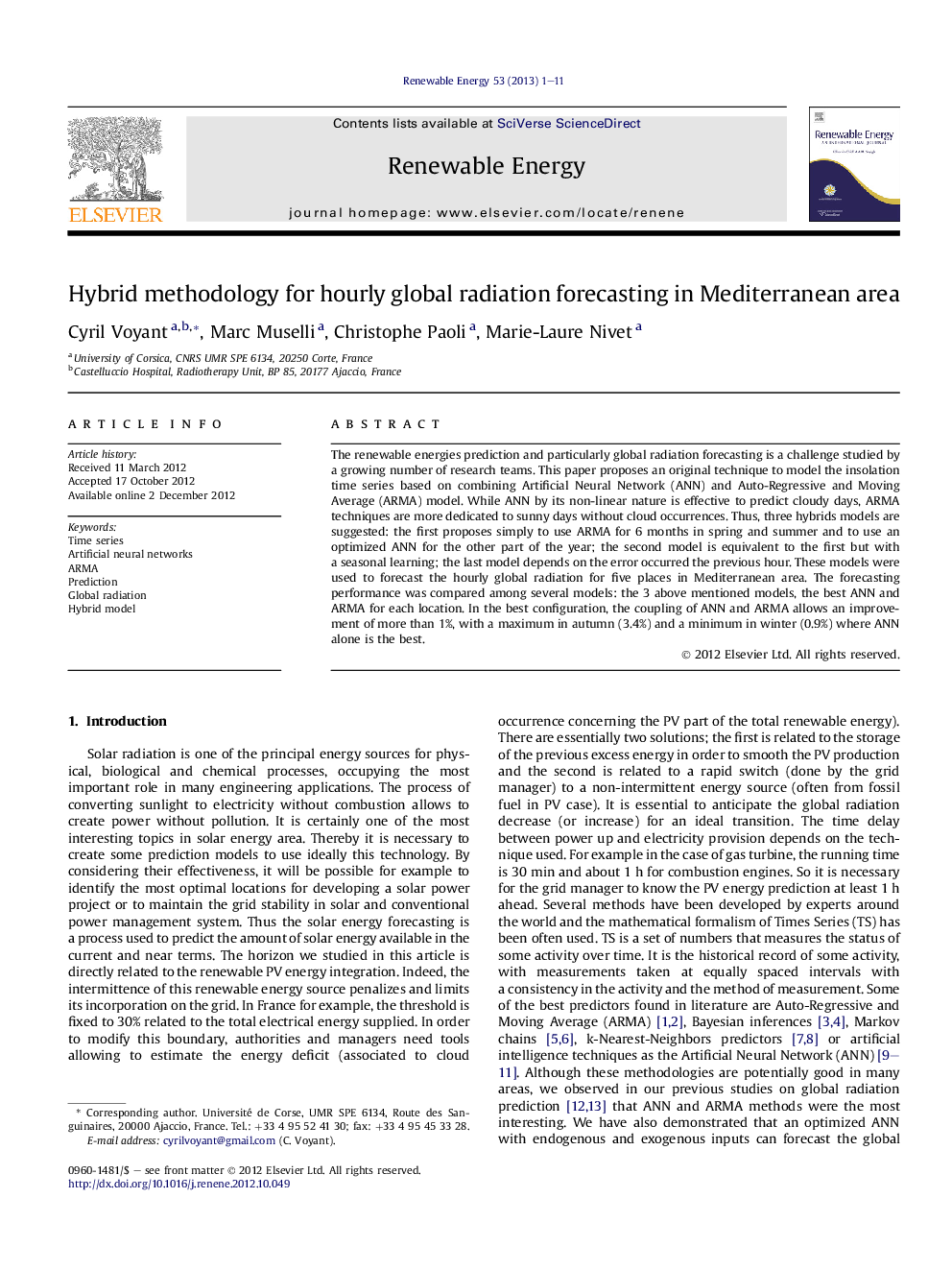| Article ID | Journal | Published Year | Pages | File Type |
|---|---|---|---|---|
| 300482 | Renewable Energy | 2013 | 11 Pages |
The renewable energies prediction and particularly global radiation forecasting is a challenge studied by a growing number of research teams. This paper proposes an original technique to model the insolation time series based on combining Artificial Neural Network (ANN) and Auto-Regressive and Moving Average (ARMA) model. While ANN by its non-linear nature is effective to predict cloudy days, ARMA techniques are more dedicated to sunny days without cloud occurrences. Thus, three hybrids models are suggested: the first proposes simply to use ARMA for 6 months in spring and summer and to use an optimized ANN for the other part of the year; the second model is equivalent to the first but with a seasonal learning; the last model depends on the error occurred the previous hour. These models were used to forecast the hourly global radiation for five places in Mediterranean area. The forecasting performance was compared among several models: the 3 above mentioned models, the best ANN and ARMA for each location. In the best configuration, the coupling of ANN and ARMA allows an improvement of more than 1%, with a maximum in autumn (3.4%) and a minimum in winter (0.9%) where ANN alone is the best.
► Time series forecasting with hybrid method based on the use of ANN and ARMA models. ► Combination of optimized MLP and ARMA model obtained from three rules depending of the analysis of hourly data series. ► Stationary process for the study of global radiation time series.
